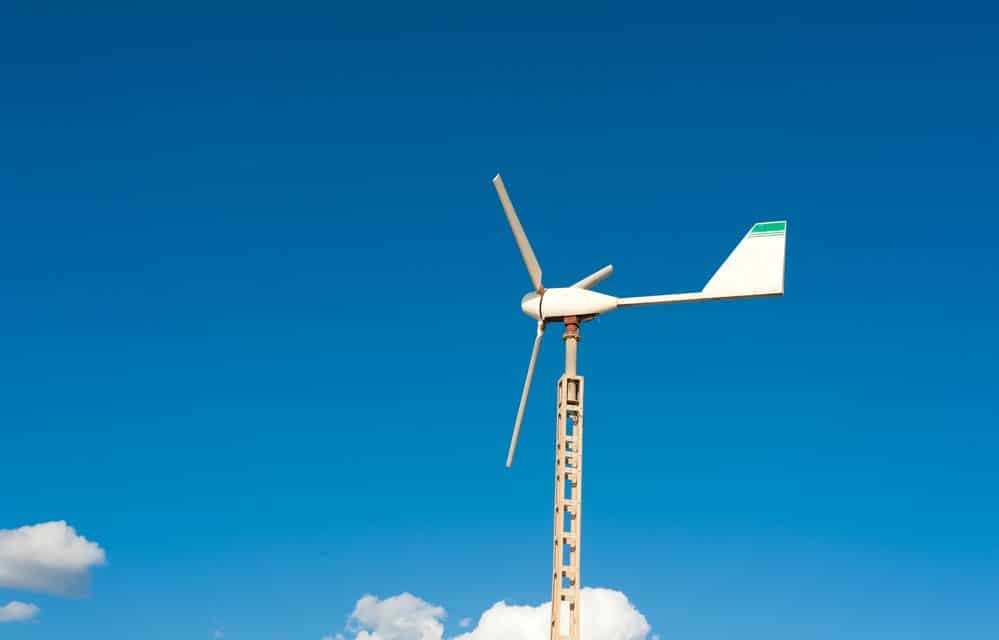So maybe you’re thinking you want to generate your own electricity. After all, who really enjoys paying a utility bill? Small wind energy is renewable, non-polluting, and can save you money. But is home wind power a good fit for you? Surprisingly, you don’t actually have to live in a windy area for it to work! In fact, many properties are not a good fit for installing a wind turbine even if they have a lot of wind. Just a note: Renewable energy experts suggest installing hybrid wind and solar energy systems for off-grid living. These systems work well because wind and solar energy tend to be most available at different times.
Off-Grid Residential Wind Power
For a home wind turbine to be worth your investment, you really need to live on an acre or more, according to the U.S. Department of Energy.
Living in a rural area helps, because if you’re in a residential neighborhood, you’re likely to run into conflicts with zoning and local homeowners associations. More so, you’re more likely to find a high average wind speed in wide-open spaces far from windbreaks from buildings and trees.
While installing a small wind turbine in a city or suburb is certainly possible, you’re more likely to have the right conditions for home wind power if you live outside city limits.
Grid-Connected Home Wind Power
If your main goal is energy self-sufficiency, you may want to be off the grid. But if you’re simply interested in producing your own residential wind power, a grid-connected system can make a lot of sense. Anytime your wind turbine produces more power than your home needs, that power goes onto the local utility grid. When you need more power than you’re generating, you draw power from the grid. Grid-connected systems are cheaper, because you can install a smaller, less expensive system; without the responsibility of producing all of your own electricity. If you consistently generate more electricity than you need, you may actually get cash back from the utility.
The total cost of 1-kilowatt wind turbine is around $9,000, excluding batteries. With an average wind speed of 9 mph, the estimated annual output is about 1,800 kwh. For a system large enough to provide all of your own energy, say close to 960 kwh per month for the average U.S. home, the costs can be significantly higher.
Tax Incentives For Wind Energy
In the United States, small wind turbines currently qualify for a federal tax credit of 30 percent.
Other financial incentives may be available through your state or through individual utilities. Look at the Database of State Incentives for Renewables and Efficiency.
The Department of Energy’s wind guide recommends 10 mph as a minimum average wind speed if you want to consider installing a grid-connected turbine.
You can find out about wind conditions near your home by checking wind resource maps or by asking a nearby airport for data on average wind speeds.
What Homeowners Need to Know About Wind Energy?
Tower Height. You really do need that tall tower, because average wind speeds increase substantially with height. For a small, residential-sized turbine, it should be at least 80 to 100 feet tall.
Wind turbines mounted on shorter towers may be producing some electricity just not as much electricity as you want, and making the financial side of wind work out is difficult if you’re not producing enough power.
Roof Mounting. Never put a wind turbine on the roof. It’s unsafe, uneconomical and not wise. A big part of the expense of the turbine is the tower, and people are looking for ways to save a little money. This isn’t the way to do it.
If you want a wind turbine that’s going to be productive, it has to be significantly above the roofline to be able to generate much electricity.
Certification. Avoid being seduced by a new wind turbine design that sounds wonderful but isn’t tried and tested. Look for established manufacturers with a proven track record and certified test results that show how much electricity you will be able to produce.
Do NOT buy anything that’s untried, untested, or that has not been certified by the Small Wind Certification Council, period.
Safety. Make sure the turbine can be safely serviced and operated. Ensure the tower can be safely lowered to the ground. Consider a tilt-down tower rather than one that requires you to work on the wind turbine 100 feet in the air.
What To Do If Home Wind Energy Isn’t For You?
You’re all set for home-scale renewable energy, but realize putting a home wind turbine in your backyard doesn’t really make sense. What are your alternatives?
Try solar power. Many sites that aren’t apt for wind turbines have great solar exposure, and the cost of solar electric panels is similar to what you would pay for a wind turbine.
You can buy wind power option from your utility or try community wind farms. Find out what’s available where you live using the Environmental Protection Agency’s Green Power Resource.



